Paper Doll Organizes Temporary Papers and Explores Third Spaces

WISDOM IN THE COMMENTS SECTION
Although the comments sections of most locations online can be scary, organizing and productivity blogs tend to avoid that unpleasantness. In fact, some of the niftiest ideas for posts come from the comments sections of other posts.
Last week, commenting on the cute magazine files in Paper Doll Refreshes Your Paper Organizing Solutions, Sara Skillen mentioned:
I’ve always loved magazine holders for all kinds of paper…but also, high quality, shallow, flat trays work for a lot of my clients (those who pile). I know, I know, we all think piling is not a great idea, but for temporary kinds of paper like bills, notices, etc. it can be an amazing solution. Less barrier to putting things into broad categories, and easy to dump in the recycle bin when things are no longer relevant. I’m also a fan of very small filing boxes (like the Bigso ones at the Container Store) for temporary paper. Easy to place on the desk for quick access.
I think that Sara and I might slightly disagree about what constitutes “temporary” paper. I believe that if you receive a paper bill, the best practice is to have a system in place so that you not only pay the bill, but file and store it for later (potential) retrieval for tax purposes, troubleshooting, budgeting, etc.
However, Sara has truck on a topic that we discuss far too infrequently — paper that doesn’t fit into either of the two main, overarching paper categories.
Last week, I referenced a guest post I’d written for Yve Irish’s blog. In that guest post, How To Make Paper Less Overwhelming, after discussing the reasons why paper management can be so difficult, I wrote:
Paper categories can be much more complex and require more thought than most other tangible items. It starts off easily enough, with two basic categories:
-
-
-
Action paperwork — This reflects all the paper that triggers an activity. From the lowly coupon for a free car wash at the new Wash-o-Rama to the reminder postcard for your medical appointment to the registration forms for your child’s summer camp, action paperwork is relatively easy to corral in an in-box or my preferred method, a tickler file. (Getting motivated to actually do the tasks is another issue altogether.)
-
Reference paperwork — If a piece of paper doesn’t trigger an action, but it’s something you need (or want) to keep for later retrieval, it’s reference.
-
-
In between the action paperwork that’s designed to trigger us to do something and the reference paperwork (whether current, or archival) for us to keep records at least semi-permanently (until they expire or are replaced), there’s a third category of papers that neither requires our activity or our long-term storage. For want of a better name, let’s go with Sara’s simple title, temporary papers.
WHAT ARE TEMPORARY PAPERS?
Beyond describing what they are not, let’s look at what constitutes an example of a temporary paper.
- Receipts — Certainly, there are different categories of receipts, each treated differently. If you’ve purchased something in cash that is not, for whatever reason, going to be returned, you can immediately shred or toss the receipt. A lunch at fast food restaurant comes to mind.
Other receipts need to be filed and kept semi-permanently, such as for any big ticket items for which you’ll need to prove value or ownership (like a piece of jewelry) for insurance purposes or use as support for your taxes.
But there are a whole slew of receipt types that you may need to keep temporarily, for short-term purposes. For example, if you’re cautious about making sure your credit and debit card receipts are accurate, you may keep a month of receipts (please — tidily in an envelope for that month and not crumpled all over your dresser) until the credit card bill comes or you remember to check online. (Restaurant receipts seem to be the most common culprit for inexact matches. Although sometimes the charge reflects a tip much higher than what you wrote on the slip, I recall one restaurant that regularly (at least 25% of the time) failed to apply the tip. Eventually, I gave up and started tipping in cash.)
Another common temporarily-maintained receipt is for any purchase you might return. Except around the December holidays, most retail locations have a return policy limiting returns to no more than 30 days. It’s understandable that you wouldn’t want to file away a receipt only to dig it out a few weeks after you make a purchase; you’ll want to have those receipts handy in case something fails to fit or flatter. (Some people, like Paper Mommy, hold onto their grocery receipts in case something turns out to be yucky or spoiled; only you know whether you have the time and willingness to return a $3 bottle of salad dressing.)
- Temporary Driver’s License — To get a driver’s license, you generally have to go to the DMV, fill out all the forms, pay a fee, and take a written test and a driving test. If your experience doesn’t turn out like Reverend Jim’s on Taxi, you’ll be approved for a license and then have your photo taken.
(If the last minute or two of this video doesn’t make you feel like the laughing-crying emoji, I don’t know how you ended up on my blog.)
However, because driver’s licenses are hard, fancy plastic cards with bar codes and holographic images and sometimes magnetic stripes, you generally don’t get your real driver’s license the same day. Instead, you usually get a paper printout of what your card should look like.
When you come from another state, most DMVs will require you to turn in your out-of-state license, and your temporary license is all you have to prove that you are a licensed driver until the real license arrives. You’ll want to keep this temporary license with you, in your wallet until the new, real license is in hand.
However, if this is a driver’s license renewal, the paper version is just your proof that your new license, with an extended expiration date is coming. If you’ve renewed at least a few weeks ahead of the expiration of your current license, there’s no need to carry the temporary paper around with you (unless you’re afraid you’ll forget that the process isn’t complete. In that case, set a reminder on your phone for a day before the expiration date to make sure you’ve received the new license and replaced the old one in your wallet!).
- Shipping and Return Slips with Tracking Information
When you ship packages and documents, the United States Postal Service has a variety of ways to ensure that you can protect your package and track its progress. For example:
Registered Mail Receipts and Tracking Numbers — Registered Mail provides security when you send something that’s difficult to replace, valuable, or otherwise needs to be tracked for additional security. You might choose Registered Mail if you’re sending something via First-Class Mail, First-Class Package Service, or Priority Mail. In theory, at least, your mail or package is secured in a sealed container or locked cage or safe during transportation, and the USPS obtains electronic and physical signatures to show you the chain of custody along the way.
You get a receipt for the item when you send it, and the then your recipient must sign for it. And if you want proof that the item was delivered, you can purchase Return Receipt or Return Receipt After Mailing service and get electronic verification of either delivery or an attempted-but-failed delivery.
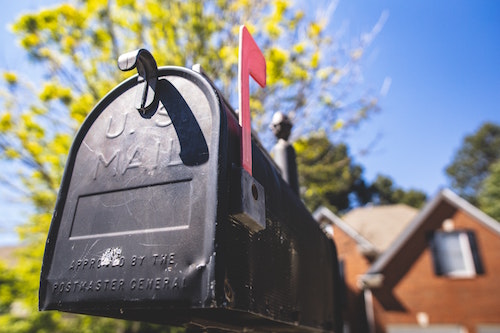
Mailbox Photo by Abstrakt Xxcellence Studios
When you send a letter through Registered Mail, the post office gives you tracking information. This is important to keep handy so that you can type the tracking number into the online system or scan the QR code or bar code to track the item until it arrives at its destination. At that point, whether you keep it or not depends on the situation.
You get similar information when you send something through a delivery service like UPS or FedEx. Have you ever returned an Amazon package at a UPS store or another retail location? Brandish a printout of an email or show a QR code on your phone, and a staffer enter the essential information into the computer and hand you a sticker with the vital details, including the tracking code. Type the string of letters and numbers into the delivery service’s tracking system (or even directly into Google!) to track your item.
So, if you’re making sure your grandchildren got their birthday gifts and your son-in-law calls to let you know the LEGO arrived, the temporary paper (the tracking slip) can be discarded. (Let’s hope you don’t have to wait for toddlers to get old enough to write their own thank you notes!)
If, however, you’re returning an ill-fitting or broken item to Amazon or other vendor, you’ll want to hold onto that temporary paper until your account has been properly credited or a replacement item makes its way to you.
USPS Certified Letter Receipt — Certified Mail is similar to, but not the same as Registered Mail. With Registered Mail, you get all that yummy tracking goodness, but you’re (allegedly) getting extra security for your item. However, with Certified Mail, you’re just paying for tracking and proof of delivery, generally for important documents like tax returns, legal notices, and financial transactions.
To send a certified letter, you fill out two forms, a flimsy piece of green and white paper and a stiff green piece of card stock.

The flimsier piece of paper is your receipt, and it shows your unique article number so you can prove the piece was mailed and track the delivery status online. When it gets delivered, you’ll get notified of the time and date of delivery and then you’ll get the signed green card back in the mail.
If you’ve taken the measure to send something via Certified Mail, it’s pretty likely that you’re going to want to prove, longer-term, that the thing you sent was delivered, so your receipt (and the eventual green card) may not be so temporary.
It may be temporary while you’re waiting to confirm delivery, but if you don’t get proof of receipt, it’s likely to turn into an action item, because you’ll have to fuss with the post office, but even if it is delivered, you’ll then have to wait for the attorney, the IRS, or the person you’re paying to acknowledge that the item was received and that they are actually acting upon said receipt.
So, your Certified Mail paper may go from being temporarily temporary paper to being action paper (and go into your tickler file) and/or permanently stored in your reference paperwork in case there are long-term legal or financial implications.
- Problem/Conflict-related Papers — How often do you receive a bill that appears to have a mistake on it? Do you ever get a notice about a recall for your car or a household appliance? Ever get invitations to showers or weddings that give no indication of where the person’s gift list is registered?
Sometimes, you open the mail and immediately make a call or send an email asking for clarification. And then you wait. And wait. It would be nice if all questions and conflicts could be handled within moments, but sometimes you have to wait hours or days for a response before you can determine whether the temporary piece of paper is now fodder for the trash or recycling bins or needs to be scheduled as task or filed away.
So what do we do with this temporary paper while we wait?
WHERE SHOULD YOU KEEP TEMPORARY PAPERS?
There are two main approaches to keeping temporary papers. As much as I’m tempted to say, “my way or the high way,” it really is a matter of either Paper Doll‘s way or a Third Space way.
Tickler File
Longtime Paper Doll readers know I like using a tickler for action-oriented paperwork. It avoids paper clutter on the desk, and it triggers the owner of the paper to make decisions about when and how the piece of paper will be acted upon. How strongly do I feel on the topic? Well, I did write a whole ebook about it!
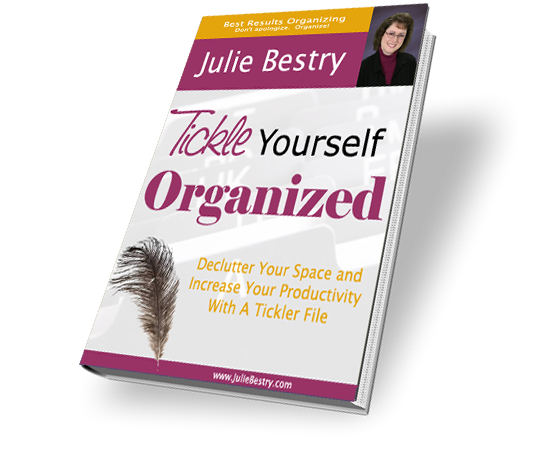
Whether you purchase a tickler file with slots for each day of the month and for each month of the year or create your own DIY version with 43 file folders, you get a parking space for anything that requires, or might require, action. Sometimes, the action required is checking to see whether you still need to be waiting.



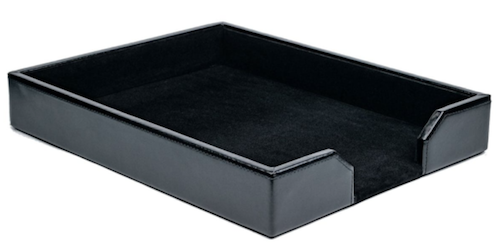
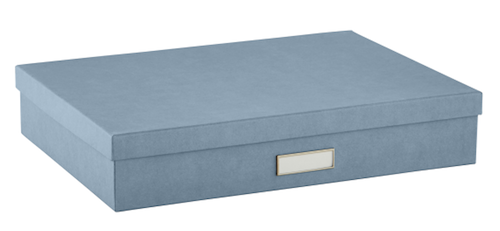
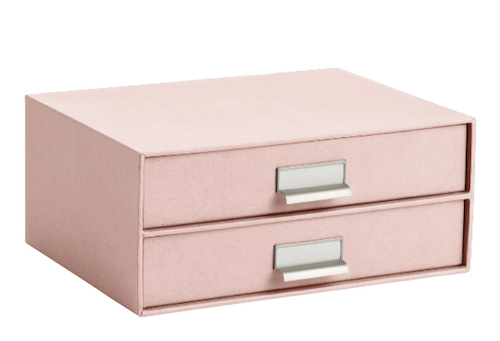 These kinds of boxes will take up about the same amount of desktop real estate as a tickler file or in-tray. However, the lid creates an out-of-sight, out-of-mind concern not present with in-box trays.
These kinds of boxes will take up about the same amount of desktop real estate as a tickler file or in-tray. However, the lid creates an out-of-sight, out-of-mind concern not present with in-box trays.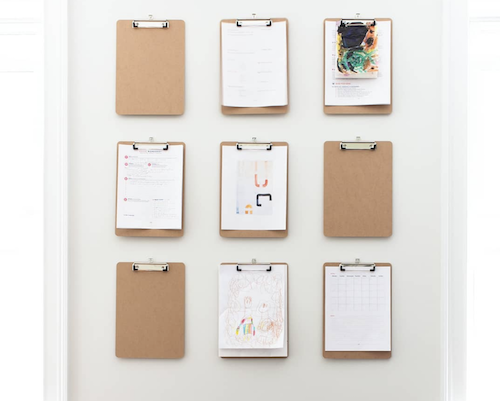


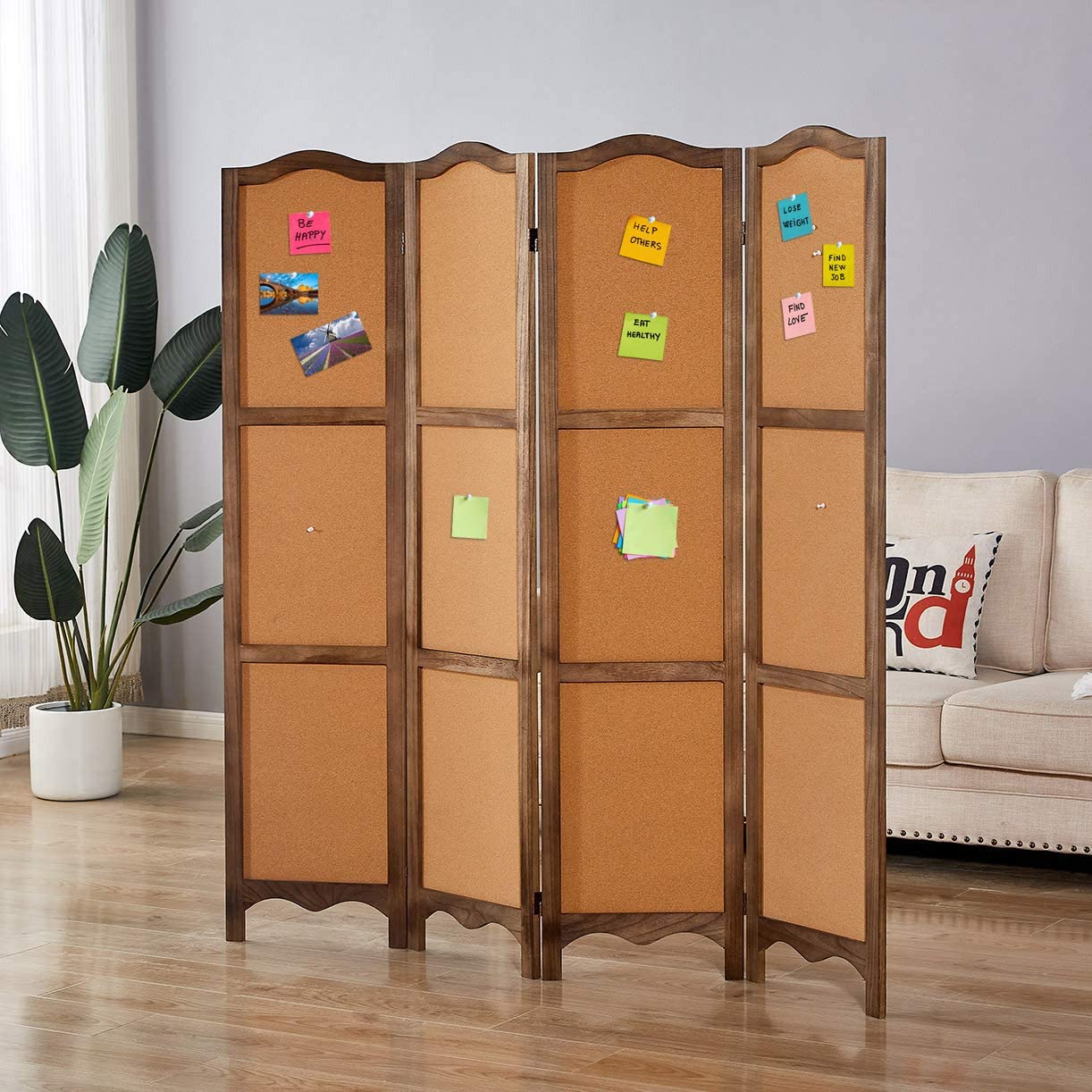




I couldn’t help myself and had to watch the video clip from ‘Taxi.’ Thank you for that. I was laughing out loud. I appreciated the slower delivery from the segment. Great stuff! Sometimes, humor paces so quickly that I miss what people say. My husband and I will watch something and frequently turn to the other person and ask, “What did they say?”
What a great discussion about “temporary papers.” Yes. We all have them. Well, maybe not all, but many of us do. I love the open tray suggestion or box Sara mentioned and your ideas, like the wall of clipboards.
I agree with you that temporary papers suggest action will need to happen at a point. The question becomes when. For me, the when determines where the paper goes. I have a solid system for ongoing projects and actions (like bill-paying, receipts to log or keep, etc.) For the actual temporary items. I have a desk slot that functions as a pile of paper. This is tied to a cue on my to-do list telling me to “review desk slot,” which I do weekly.
I can go years between viewings of this and can still hear Rev. Jim’s voice, repeatedly and ever-more-slowly, asking, “What. Does. A. Yellow. Light. Mean?” and I howl with tears streaming down my face.
I love that you have a cuing reminder to check your pile in the “desk slot.” For me, a tickler makes the most sense, but for some clients, I had to acknowledge how right Sara was that the “third space” was the way to go, and there are really many great options.
Tickler files and third space are wonderful options for organizing temporary papers. I created a DIY version for myself for the kids’ temporary papers in the kitchen. I would use pocket folders, sticky notes, and a file sorter. The sticky notes would have the date and other comments needed for the temporary paper. The pockets were labeled by month. They were tucked into a pull-out drawer. When the event would pop up on my calendar, I would pull the papers out and place them on my magnet board in my command area. It helped me keep the temporary papers organized. Thanks for sharing your knowledge.
Wow, Sabrina, I love the system you created, and when I was typing “DIY,” my first thought was, “I bet Sabrina Q. has come up with a DIY version for temporary paper!” And of course you have. I’d love to see that method in action!
Although I don’t think I’ve ever focused on the phrase “third space,” it makes instant sense to me. As you say, those papers that will potentially require action, just not now. Figuring out the when is part of triage, that step we take before we put papers anywhere.
I usually have a very small running stack of papers on the right side of my desk. I never let it get too big, and having it there means I leaf through it frequently (because the visual clutter bothers me). Other paperwork has designated locations, even those for future action, as long as it is repetitive (e.g., bills to pay).
I like the drawers because they are pretty and don’t require me to lift off a lid, which for some reason, always feels like a bit pain to me LOL!
You’re right, Seana! Lifting lids is a type of friction that’s more likely to lead to delays; it’s the same reason why people don’t toss things in the laundry basket but pile stuff on top of the lid! I never thought about how drawers might offer less friction — I guess it’s just how each of our brains work. I think in terms of sequence: I’m going to do X and Y today and Z next Monday and 3 and 7 in May, and so on, so the tickler works with my chronological brain. (I guess it’s like how some people hear words or numbers and see colors?)
I’m curious about you having the stack of papers on your right; are you left-handed? I’m a righty and any papers (or my tickler) and my planner go along the left side of the desk. I never turn to the right. (But maybe that’s because I use a lot of mouse space?)
First of all, thank you for that video. I needed that laugh! I keep receipts in an envelope in my desk drawer until I either toss them or file them. I have a pending folder in my action files where I tuck temporary paperwork like tracking numbers. I also have in that folder notes on any actions that I am waiting for a response.
Aha, so you have a “third space” for receipts and one for pending items in a folder. Having to open the drawer and get into a folder might be too much friction for some, but it sounds like the perfect solution for you!
I have a small porcelain vase that I use for receipts – specifically USPS tracking numbers and any other receipt I feel like holding onto. Generally speaking, I don’t keep temporary papers, though. If I have a receipt from a restaurant, I enter it into quicken and then recycle it. When I have big ticket item receipts, I scan them and add them to my household inventory. I’m not a piler and am challenging myself to have much less on hand in paper – preferring to hold things in the cloud.
Of course, as an organizer, your diligence in getting things recorded and tucked away is admirable. For clients, though, and readers who aren’t POs, I’m curious about two things. First, what do you recommend to your own clients who aren’t inclined to be so diligent? And second, how do you fit receipts into a vase? Do you roll them up as though they were flower stems? Or is it more of a wide-mouthed vase and squat, more like a bowl? I’m trying to envision it.
Well, I’m honored to be mentioned and quoted as an inspiration. I don’t think that’s ever happened before! Of all your “third space” ideas, I’m really liking the clipboards. Super easy to put in high traffic areas for families, home or work offices, and to me they kind of yell, “TEMPORARY”.
Great post, both informative and entertaining (which you do so well)! We can arm-wrestle about those paid bills another time (I have literally never looked back at one once it’s been paid, and IMHO most of the info can be recreated somewhere else online). My disdain for keeping bills could be rooted in my experience two moves ago – getting rid of years of them that I never used or referred to. Maybe we could compromise and scan them?
Well, Sara, you are quite inspiring, but that particular comment got all my mental gears turning! The clipboards are for the people who hate piling, but also hate filing. I’ve had some warehouse clients who love the ease of having a series of clipboards lined up, keeping papers handy but not fiddly.
LOL regarding the bills. I have so many clients for whom we have to check year-to-year bills (especially because the water company does some naughty things), and need to go back to check bills to see how long a problem has been occurring or has gone unresolved. Scanning is great, for those who will actually do so. But for paper people? Those prior & current year financial files are key to keeping their anxiety at bay.
Thanks for playing in my sandbox!